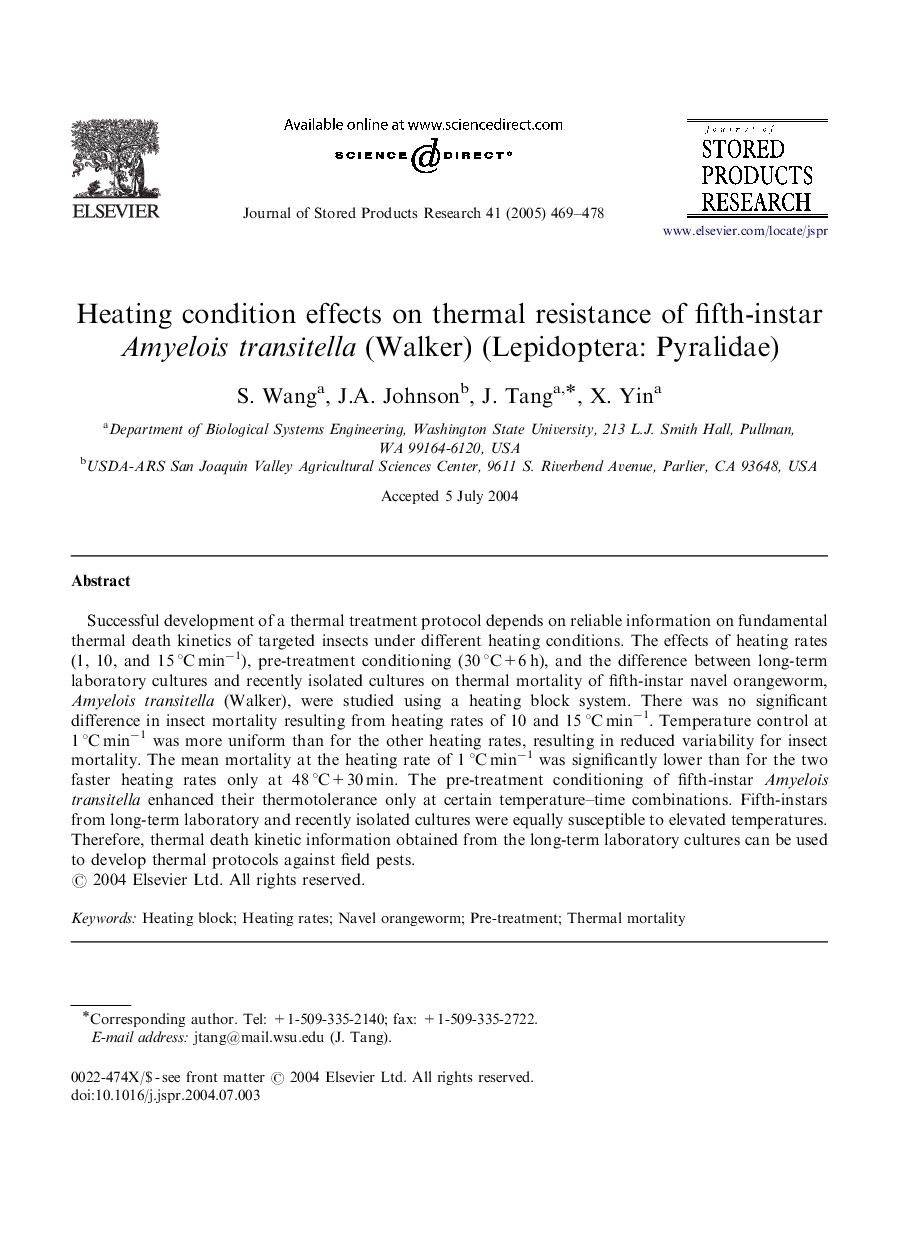| Article ID | Journal | Published Year | Pages | File Type |
|---|---|---|---|---|
| 9474857 | Journal of Stored Products Research | 2005 | 10 Pages |
Abstract
Successful development of a thermal treatment protocol depends on reliable information on fundamental thermal death kinetics of targeted insects under different heating conditions. The effects of heating rates (1, 10, and 15 °C minâ1), pre-treatment conditioning (30 °C+6 h), and the difference between long-term laboratory cultures and recently isolated cultures on thermal mortality of fifth-instar navel orangeworm, Amyelois transitella (Walker), were studied using a heating block system. There was no significant difference in insect mortality resulting from heating rates of 10 and 15 °C minâ1. Temperature control at 1 °C minâ1 was more uniform than for the other heating rates, resulting in reduced variability for insect mortality. The mean mortality at the heating rate of 1 °C minâ1 was significantly lower than for the two faster heating rates only at 48 °C+30 min. The pre-treatment conditioning of fifth-instar Amyelois transitella enhanced their thermotolerance only at certain temperature-time combinations. Fifth-instars from long-term laboratory and recently isolated cultures were equally susceptible to elevated temperatures. Therefore, thermal death kinetic information obtained from the long-term laboratory cultures can be used to develop thermal protocols against field pests.
Related Topics
Life Sciences
Agricultural and Biological Sciences
Agronomy and Crop Science
Authors
S. Wang, J.A. Johnson, J. Tang, X. Yin,
